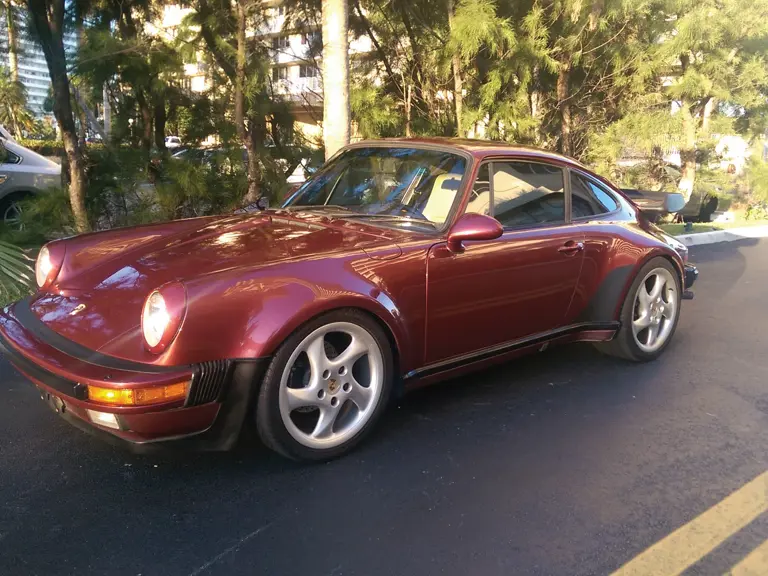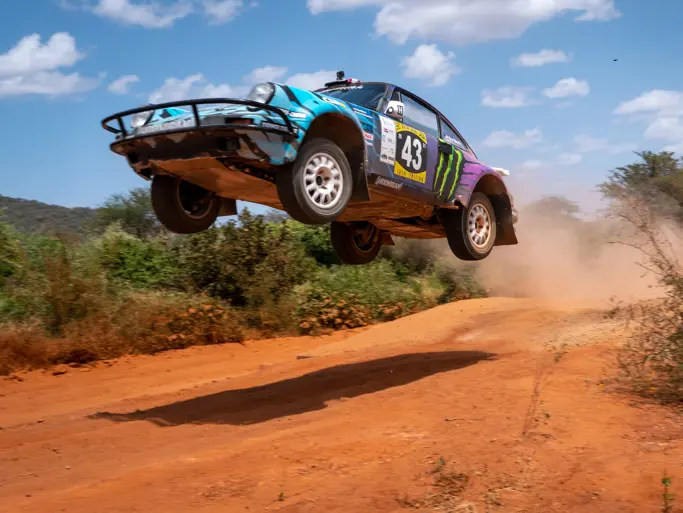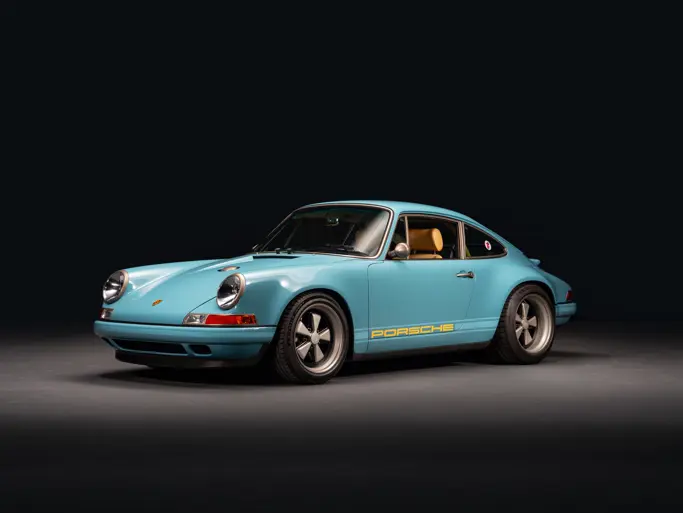
1986 Porsche 911 Turbo
{{lr.item.text}}
$65,000 - $80,000 USD | Not Sold
{{bidding.lot.reserveStatusFormatted}}
- 3.3-liter, 282-hp flat six air-cooled turbo engine
- Four-speed manual transmission
- Only 1,424 U.S.-spec 911 Turbos built in 1986
- Whale tail rear wing
- Alloy wheels
- Air conditioning
- Electric sunroof
- Power conveniences
- Very desirable Porsche model
Porsche's drive to unswervingly improve their racing program led to many ground-breaking innovations. Thanks to homologation regulations in the racing world, which required a finite number of cars to be produced and sold before the models were allowed into competition, many of those ground breaking innovations were served up to the public through production cars built and sold to meet those requirements. The Porsche 911 Turbo is a perfect example of “homologation gone wild.”
After a six-year absence, the venerable Type 930 returned to Porsche’s line-up in 1986. It again became their top-of-the-line 911 and delivered with it very impressive performance. With a new Bosch DMR engine management system and an oxygen sensor, the Type 930/68 3.3-liter turbocharged and intercooled engine produced a healthy 282 horsepower, enough to launch the car to 60-mph from a standing start in just 4.6 seconds and to a top speed of almost 160-mph. Only 1,424 U.S.-specification 911 Turbos were built for that model year.
For a briefing on how this car responds to pushing the limits we turn to Road & Track magazine who stated; “Just as four-wheel drive enables one to get farther from the pavement before becoming hopelessly stuck, so do fat, grippy tires and stiff, tailored suspension enable one to go faster and faster before becoming hopelessly unstuck.” The 911 Turbo’s suspension settings are chosen to keep the rear wheels in the rear for as long as they can.
At the time of his untimely aircraft-related death in 1988, Al Holbert was America’s winningest road racing driver and director of motorsports for Porsche-North America. He was a master behind the wheel of these machines and he used to say that driving the Porsche 911 Turbo near the limit is best done “using three feet.” It was widely acknowledged that the design of the 911 Turbo induced characteristics where applied power will push the front end wide; jump off the throttle and the back end will step out; open the throttle enough and the back end will step out; keep the power on moderately and the rear stays in place while the front plows.
“Flat-out, the 911 Turbo gains speed at an incremental rate. The rear wing pushes the rear tires down, the rear tires are trying to drive themselves right through the car, the front tires are reacting to every little bump and dip, the wheel is kicking and jumping, the engine is howling….we’re having fun now, boy, with our eyes wide open.”
The 911 Turbo was lavishly equipped with just about every convenience an owner could desire. Along with a long list of standard equipment, which includes electric window lifts and air conditioning converted to 134A. This Garnet Red (aka Granatrot Metallic) example is factory-equipped with electric sunroof, a Champagne full leather interior, power locks and four-wheel disc brakes. This is the twin-plug engine and has “upgraded fuel injection.”
The Porsche looks and runs in an excellent manner and has a clean Carfax. The owner has no knowledge of any prior accidents, and also conveys that there is no rust and approximately 90 percent of the paint is original to the car. Additionally the 911 Turbo has its toolkit, jack, spare tire and factory tire air compressor.
Coinciding with the reunion of the Porsche 911 Turbo with the American roads was the release of the Targa and Cabriolet versions which were welcomed with both open arms and wallets by Porsche enthusiasts. For the Porsche enthusiast desiring an exciting example of an air-cooled 911 Turbo Coupe with a respectable list of options, here is a great opportunity.


 | Fort Lauderdale, Florida
| Fort Lauderdale, Florida


